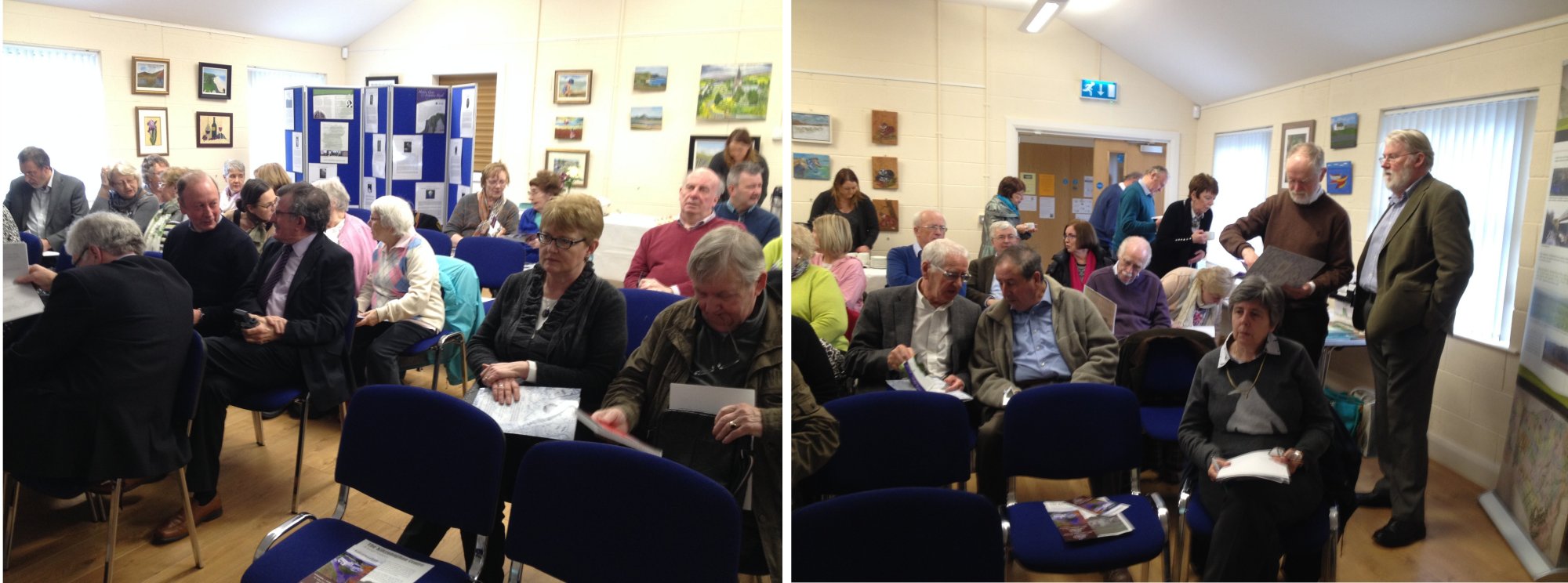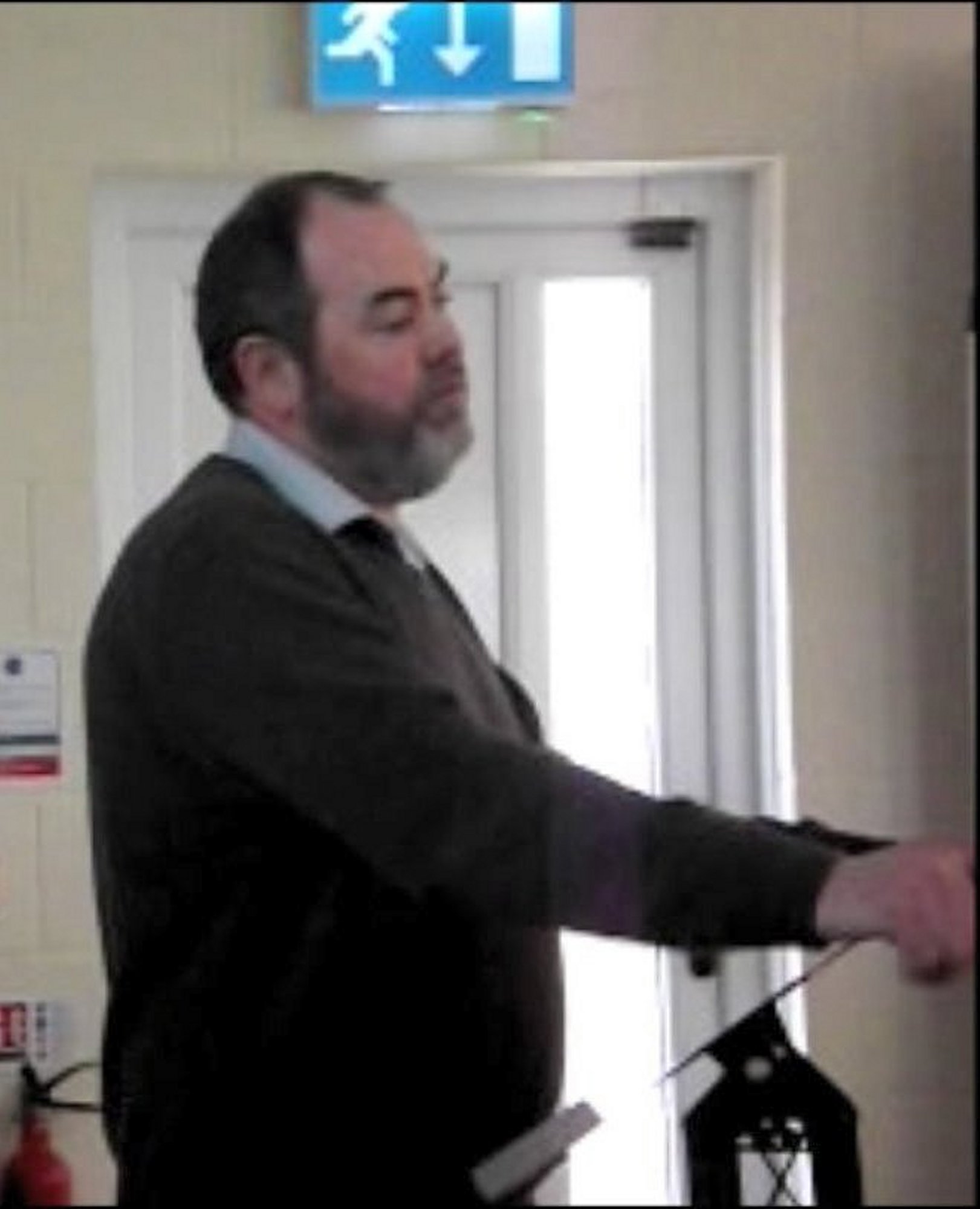People, Place and Time. Seminar in Kilcronaghan Centre – 12 March 2016
In March the Federation’s How To Seminar was held in the Kilcronaghan Centre in Tobermore. The Seminar aimed to provide societies with information and guidance on the resources and methodologies available in pursuing local studies, with societies sharing their experiences and knowledge.

James Armour, Chairman of the new Maghera Historical Society, provided a detailed account of setting up and developing a new society. Launched less than two years before, the Society has amassed an impressive array of accomplishments in a very short time, and for those thinking of setting up a new Society, his exposition was a master class in all the issues that will need to be addressed. This short report can’t do it justice. It covered the initial stages; getting a group together, preparing a Constitution, registration as a charity, acquisition, repair and fitting out of a Visitors’ Centre; designing corporate colours and a logo; acquisition of funds from a wide variety of sources, publishing of a journal and other publicity material, Facebook pages (one closed, one open), involvement of the local community in a variety of activities including a time capsule, a parade of Clydesdale horses and historic farm machinery; providing a space for local artists, authors and poets that was not available before; undertaking an Oral History Project – and much more. The Society, and James, is to be congratulated on a truly massive and impressive achievement and the Federation wishes them well for the future. It is a shining example of what can be achieved by drive and focused leadership.
 |
 |
Pat Devlin, Federation Chairman, outlined the history and present stage of the Hidden Gems and Forgotten People project administered jointly with the Federation of Local History Societies. In October 2015 President Michael D. Higgins had opened the well-attended HG&FP Exhibition. He had endorsed the project and wished it well. Some aspects of the project, including the geographical spread of the articles (only two of the 32 Counties were unrepresented) were discussed, including the stories of some of the characters listed from all parts of the island. The Federation was about to discuss with Libraries NI a programme to hold Exhibitions in local Libraries over the following year, the first of which would be in Belfast Central Library in September. The rolling programme would involve local societies in helping to plan, publicise, launch and run the Exhibitions, which would run for three weeks at each location. There would be similar Exhibitions in Counties Donegal, Cavan and Monaghan.
 |
 |
Roddy Hegarty, Cardinal O’Fiaich Library, spoke about the challenges facing local historical societies in the Decade of Centenaries. Acknowledging that commemoration events were potentially divisive, he nevertheless encouraged local societies to review the potential of their local areas. Commemoration marks out the special from the ordinary, retains memory of people and events, can encourage social interaction and present a challenge. He discussed the difficulties of objectivity and the need to revisit, revise and rewrite the received version of past events, now that new and additional historical resources were becoming available. He used the history of the Famine to illustrate the ways in which new sources of information can provide new insights not available or easy to access in the past. An enormous and growing range and volume of historical information was now available on-line. He pointed up the danger of viewing the past through the medium of the present, or through interest groups who often used research to reinforce the perceived version of events rather than by reviewing the evidence for alternative interpretations. He asked the question of whether neutrality and objectivity were the same thing – is history neutral, can we have value-free history? Commemorative work has benefits; it can be enjoyable, it promotes knowledge, provides different perspectives of events, facts, people, opinions, can help to develop relationships between opposing groups, and provide a forum to discuss and resolve issues. However, it can also be painful and potentially divisive. For societies setting out on a commemoration project he suggested a framework which included agreement on what was to be achieved, how it would contribute to the society work. Will it showcase the society? Is it achievable in terms of the people, resources and knowledge available? It should celebrate in context, it should contribute something new, engage with others e.g. local schools and community groups. It should be published widely, through e.g. social media and leave something for the future e.g. a publication.
 |
 |



